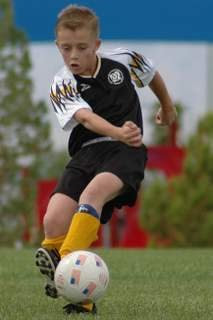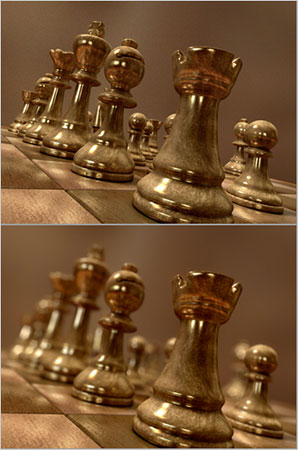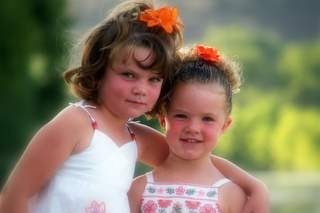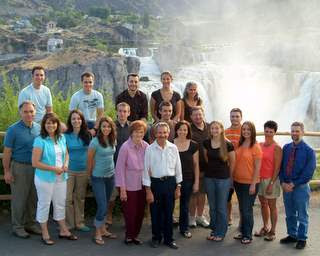Wednesday, September 17, 2008
See me over at the new site
Friday, September 12, 2008
Tip of the Week - SLR vs. Rangefinder
Do look for a new tip every week or so, however. I can probably manage that.
And so, since it's been a week since the last tip, here we go again.
When people ask me about what kind of camera I have, or, more often, ask me what kind of camera they should buy, we often end up talking about the form factor. In other words, "kind of camera" doesn't mean brand or megapixels or film vs. digital so much as it means what shape is it. Though there is plenty of variation, the form factor question boils down to just two kinds, really-- SLR (single-lens-reflex) or rangefinder. I won't go in to a detailed description about the technical differences between these "kinds" of cameras. The basic differences are pretty simple, and are, for my purposes, the more important issue. It comes down to portability and adaptability.
I think everyone has seen the ultra-thin, ultra-sexy little cameras that fit in your pocket with room left over for your iPod or your cell phone or your favorite paperback novel. These little gems are surprisingly sophisticated these days-- sporting 7-10 megapixel sensors, face-recognition software, multiple modes, and pretty good zoom lenses. The beauty of them is that they fit in that pocket. They take up so little space that you hardly notice you are carrying a camera, but when you see that amazing two-headed car salesman, or a gorgeous oak tree shedding its red and orange splendor, or your child is knee deep in a mud puddle looking just too darn cute, you're pretty happy to be able to snap away and preserve that stunning scene for posterity.
One of the axioms of serious photographers (those who are serious about "getting the picture") is that you should always have your camera with you. No matter how amazing the scene, if you don't have your camera in hand, you won't get the picture (seems obvious enough, right?). A slim little camera is always at hand and will get some better, which is better than no picture in most cases.
The trade off (and you remember, don't you?, that there are always trade offs in photography) is that the little rangefinders, as sexy as slim as they are, usually don't have as much zoom power or flash power or exposure control power as their big brothers-- the SLRs.
As I noted above, SLR stands for Single Lens Reflex, which means that the light coming through the same lens that the film or the sensor sees is also shunted, by a complex mirror and prism system, to the photographer's eye in the viewfinder. Rangefinders, on the other hand, usually use two different lenses-- one for the film/sensor, the other for the viewfinder. (This raises a related concern about rangefinders being just a bit less accurate in capturing what the photographer sees through the viewfinder-- especially at close range.)
SLRs are also often (but not always) part of a larger camera system with interchangeable lenses and other accessories like external flash units, extension bellows, and remote firing systems. Any decent SLR system will have a range of lens choices for the photographer, from wide angle and macro (close up) lenses to portrait (medium range) zooms, to ultra long telephotos lenses. For whatever shooting situation imaginable (nearly) and SLR has the potential to fit a lens to the purpose.
The down sides of this are that you have to lug the thing around. SLRs are bigger (sometimes by what seems like an order of magnitude), and if you want the option of switching from a wide angle to a telephoto lens, you have to carry them as well (not to mention flash units, tripods, filters, etc.).
Cost is, of course, also a factor. A decent rangefinder with an advanced sensor and 8-10 megapixels can be hand for a couple of C-notes. SLRs are available from the $500-600 range all the way up the Canon's granddaddy 20+ megapixel pro SLR which sells for over $8000 (and that's just the body-- no lenses included). The good thing is that many companies are now making ultra-small SLRs, which give you the adaptability with a pretty small form factor. They still won't fit in your pocket, to be sure, but they will fit in your purse (probably) and certainly in a diaper bag or a backpack.
It's a bit hard to keep track of all the different models that manufacturers are coming out with-- seemingly every few days. Since I bought my SLR two years ago, the maker has come out with TWO successive models in the same line. It's probably not as crucial to every detail about every camera, though. With a sense for what you want to do with the camera you can begin to choose between the basic forms-- small, compact, lightweight or bigger, more complicated, but also more versatile. Not a bad choice to have, in my book.
Friday, September 5, 2008
Tip of the Day - Megapixels

The image above is displayed with LARGE pixels-- too large, in fact, for the image to be readily recognizable. Below is the same image with "standard" pixel size.

"Mega" in the case of megapixels is just a term of measurement. One megapixel is simply one million pixels. Thus, a 6 megapixel camera crams 6,000,000 pixels into the sensor. (Phew!)
I think almost everyone reading this know about pixels, but it's good to cover the basics.
The more important, or more-often-asked, question is: how many megapixels do I need in the digital camera I'm going to buy? The answer to that question, like so many others in photography (and in life, really) is: "It depends."
The main factors that help determine how many megapixels you might need are:
- What kinds of enlargements do you plan to print? (the larger you plan to print, the more megapixels you'll want to have to work with)
- How much cropping do you plan to do? (cropping your photographs from full frame down to 1/2 or 1/4 frame may result in degraded images if you start with too few pixels. More pixels in the full frame means more pixels in the cropped frame)
- Does the camera, independent of megapixel count, have the features and quality I want/need? (you'll want to consider, among other things, the camera's lenses (are they quality glass or cheap plastic?), sensor quality (newer sensor generally perform better than 1st or 2nd generation sensors), available modes (see the previous Tip of the Day), responsiveness, and price when buying)
Now is a great time to buy a digital camera.
Monday, September 1, 2008
Tip of the Day - Camera Modes
Hello again. School is underway and I'm getting back to the tip of the day. Let's pick up where we left off.
So far we've discussed the a basic composition technique, the way the lens and the shutter manage light, and how the sensor manages light. This tip is about how the camera's software can help to make many of the decisions that photographers need to make in making good photographs. Some people call these the "dummy" modes, but with just a little understanding of how they work, you can use them in an intelligent way.
Most of the time, beginning photographers leave their cameras in the "auto" mode. They leave all the decisions about shutter speed, aperture, and ISO settings up to the camera (or up to the software in the camera). That's not a bad idea, really. The software driving contemporary cameras is pretty sophisticated (and getting more sophisticated all the time) and can handle a wide range of photo conditions. Because nearly all digital cameras (all, really) also allow you to view the results of your shutter snapping you can immediately judge whether or not the camera has chosen wisely (remember those Diet Coke commercials when Indiana Jones and the Holy Grail came out?).
Sometimes, however, you want to take a bit more creative control, and the little icons on your camera's modes dial let you make changes to the way the camera behaves so as to get particular results. It's exceedingly simple.
The little sprinter guy represents a sports mode which favors faster shutter speeds (at the expense of depth of field, usually).
The mountain icon sets your camera to a smaller f-number so as to achieve a deep range of focus (or depth of field).
The flower dealie (do people outside of Utah/Idaho even recognize that word?) sets your camera to a larger f-number (usually) and may also set it to a different focus mode (the macro mode, which we haven't discussed yet).
Your camera may have other modes. If so, and if you're not sure what they do, post a comment here and I'll do my best to explain what is does.
The point here, of course, is that these modes settings are shortcuts to the kinds of decisions you learned about in earlier tips. They allow you to set several camera settings at one time, accurately and quickly. Pretty nifty, eh?
Wednesday, August 20, 2008
Tip of the Day - a brief hiatus
In the meantime, I'll just post this little note to say that:
- the Times-News says they'll be publishing one of my summertime photographs in a few weeks. I'll point it out when that happens.
- I'm going to try to enter some pics in the Twin Falls County Fair. Because I actually make a buck or two with my camera I'll have to enter as a professional. That'll be interesting. More on that later, too.
Monday, August 11, 2008
Tip of the Day - ISO
The range of options available when talking about ISO (or film/sensor sensitivity to light) represents a similar type of trade off. A lower ISO number-- say 64 or 100-- represents the lowest sensitivity to light, but give the highest image quality in terms of graininess or "noise." Higher ISO numbers allow you to capture images in lower light settings, but add "noise" to the image, making them less and less suitable for enlargements.
Here are some examples to illustrate this point:


This image was take in full sun at the lowest ISO setting on the camera--100. The close up shows that the dark areas are nearly perfectly uniform.


This image, however, was taken at dusk and from some distance away. To allow shutter speeds that could remotely allow me to hand hold the camera, I bumped the ISO setting to the highest on this camera--1600. Notice the significant graininess or noise--especially in the darker areas.
If you don't plan to enlarge your images much beyond 5x7 then the higher ISO settings aren't too much trouble. The noise is not as noticable in smaller prints. At 8x10 or above, however, you should try to capture your images with the lowest ISO setting you can get away with.
Newer cameras manage image noise at the higher ISO settings much better. The newest Nikon professional grade DSLR, the D3, shows exceptional image quality, even at ISO 3200. See below:

The D3 can also go three full stops beyond 3200 to an astonishing 25600.


The ultimate take-home lesson from the tips on aperture, shutter speed, and ISO is to manage your ISO like you manage your shutter speed and aperture. Keep in mind the effect you are working for and adjust accordingly. If enlarging your images is important--keep your ISO low and open your lens wider or use a slower shutter speed. If capturing action is paramount--use higher shutter speeds, even if bumping your ISO up a little is necessary. To isolate that head shot against a blurred background, open your lens to its wider apertures.
So... how are your photographs improving? Post a comment here and let me know how you're doing and if you have any questions.
Thursday, August 7, 2008
Tip of the Day - Shutter Speed
Okay, so I wrote the other day that a properly exposed photograph depends upon three adjustable things: aperture, sensor or film sensitivity to light (called ISO or film (sensor) speed), and shutter speed. Today's tip deals with the last of these-- the amount of time that the shutter is open allowing light to stream to the sensor or the film.
Like aperture, the shutter speed you (or your camera) select determines a proper exposure, but it also helps create some of the effects that you've seen in photographs you admire. Maybe you've even hoped to achieve similar effects. Let's talk about how to do that. But first a note about getting the shot at all.
Shutter speed is generally measured in fractions of a second. Most modern cameras have shutter speeds settings from 1 sec to 1/1000 of a second, or faster (we'll deal with the "B" or "bulb" setting in another tip). As I mentioned above, the shutter speed is an indication of how long the shutter is open, allowing light through the aperture. One of the ways, beyond proper exposure, that this number matters has to do with how long the human body can hold really, really still. It might surprise you to learn that we humans aren't really built to hold that still. As the living, breathing organisms that we are, we tend to be always in motion at least a little bit. Try an experiment. Try sitting rock still and then notice how much is really going on in your body. Even when you are trying to be motionless, you are still breathing, your heart is still beating, your muscles are still moving--albeit slightly--to keep you upright. All of these motions contribute to humans not being very good tripods (and though we are technically bipods (or bipeds, or whatever ;-) ), we just don't hold still that well-- at least in terms of what a camera sometimes needs).
If you take notice of how much you move in a second, you might realize that a frame of film or a digital sensor would detect that motion. As hard as we try, most humans can't hold still enough to avoid moving the camera enough to blur a picture taken at about 1/30 of second or slower. As a result, you should try to keep your shutter speed above that number when hand holding your camera. At shutter speeds of 1/60 of a second or faster, the shutter is open so briefly that a little tremor by the photographer will go unnoticed. So, keep your shutter speed above 1/30 most of the time.
What does shutter speed for the image itself, then? The main thing is, of course, that it stops the action-- or doesn't. Take a look at these two images.


The first image depends upon a fast shutter speed to stop the action. Even a sprinting soccer player or a ball that has just been blasted by the kicker can't move very far in 1/1000th of a second. (In this case, the shutter speed was 1/640 and the aperture was f5.6, 300mm lens.)
The second image relies upon a slow shutter speed to give a soft, ethereal quality to the water. This shutter speed was just 1/3rd of a second (f8, 170mm lens). Pretty slow. The water flowing across the rocks becomes blurred and smoothed.
To get your camera to achieve such effects, use the shutter priority mode. That is to say, you select the shutter speed and the camera selects an appropriate aperture (f-stop) if it can. The "sports" mode is essentially a shutter-priority mode that is biased towards faster shutter speeds. A landscape mode, on the other hand, is an aperture-priority mode that favors small apertures (higher f-numbers) to achieve a greater depth of field.
Tuesday, August 5, 2008
Tip of the Day - Aperture, part 2
Nearly all photographic lenses have aperture setting measured in f-stops. The crazy, counter-intuitive thing is that a large f-stop number, like f22, indicates a very small hole in the lens. A small f-stop number, say f2, means a large hole in the lens. In the example below, image #1 is of a small f-number, and image #2 is of a large f-number.

As I wrote in part 1 of this tip, a large aperture means lots of light gets through to the sensor and requires the shutter to be open only a brief time (and, of course, the inverse is true, a small aperture needs a longer shutter opening). Another element affected by aperture is how much of the image is in focus beyond the exact spot where the lens if focused. This range of focus is called, as I mentioned, the depth of field. Depth of field means the depth, moving from the camera in a straight line in the direction the lens is pointed, of the field viewed by the camera that appears to be in focus to the viewer.

As you can see from the lower image, a larger aperture (smaller f-stop number) yields a narrow range of focus. Not much of the image beyond where the lens is focused appears to be in focus. A smaller aperture (larger f-number) yields an image (the upper image) that has greater depth of field or range of focus.
Okay, fair enough. The next question is: Do you care about the depth of field in your photographs? The answer, as with the rule of thirds, is: sometimes.
Let's take to examples from portrait photography to explain why you might want to pay attention to aperture and depth of field.

In this example, a photograph of just a couple of people, one of the effects photographers are sometimes going for is to have the main subjects in focus, but to have the background out of focus. Such an effect helps lead the viewers eye to the subject. To achieve this effect, select a large aperture, if conditions allow, and allow your camera to select the appropriate shutter speed.

If the portrait is of a larger group, however, the photographer may want to have a greater depth of field to make sure the everyone in the photograph is clearly in focus. To achieve this effect, select a smaller aperture, and again, if conditions allow, let your camera select the proper shutter speed.
Other conditions where aperture control is useful are macro (close up) photography, photographs of flowers, online auction pictures, and landscapes (though each of these requires slightly different aperture settings).
We haven't yet addressed what to do if conditions DON'T allow you to select the aperture that you desire. We'll discuss those options later on. Stay tuned.
Up next, how does shutter speed affect image quality?
*By the way, this setting is called aperture priority. Check your camera. I'll bet it has this mode. More on modes in another tip.
Tip of the Day - Aperture, part 1
Basically, aperture (also called f-stop) is the size of the hole that lets light through the lens (similar to the pupil of your eye). Shutter speed is how long the shutter is open to let light through that hole. ISO is another term for film speed, which is a measure of a film's (or digital camera's sensor's) sensitivity to light. These three elements combine in many different ways to achieve different results.
Before we discuss how aperture creates story, let's look at how the three elements work together. To achieve a properly exposed photograph (saying nothing, for the moment, about composition or color or anything else) the camera must receive the "right" amount of light on the film or the sensor. Let's call that amount X. Amount X is roughly the same for each ISO setting or film speed. X is equal to 100 for 100 speed film or an ISO setting of 100 on a digital camera (there is some complicated math behind this, if you are interested). Depending upon how much ambient light is available in the scene you are photographing, the photographer (or the camera) adjusts the aperture and shutter speed to get the needed amount of light to the sensor or film.
A large aperture means that lots of light gets through the lens to the sensor at a time. A small aperture means less light gets through at a time. If lots of light gets through quickly, then the shutter does not have to stay open as long. If little light gets through, then a longer shutter speed is needed. Additionally, a sensitive sensor or film means that less light is necessary to achieve the correct exposure. Kind of basic stuff, but, as I said, not understood by some photographers and therefore worth reviewing.
I'll discuss shutter speed and ISO in more detail another day. Today I'm posting about the ways that aperture creates effects on the image you get (or the image you are trying to get). Take a look at part 2 of this tip, which is posted separately.
Monday, August 4, 2008
Tip of the Day - Rule of Thirds
There are occasions when just pointing and shooting is the best way to get the shot. Sometimes the action will slip away or the moment will pass and getting a technically good shot isn't possible.
This shot, for example, would have gotten away entirely if I'd tried to clean up the background or eliminate the other players in the foreground.
Most of the time, however, a little knowledge, a little planning, and some experience will lead to photographs that are, more often than not, well composed.
Here's some of the knowledge. First: though we strive for balance in our checking accounts and in our responses to our children's temper tantrums, balance in photographs is usually pretty boring. Having things a little off center is often more interesting to look at than something placed "plunk" in the middle of the frame. Compare these two images, for example:
and
In the case of the kids, doesn't your eye go to Cate first (she's the little dollie in the front), and then to the boys in the background (Cole and Cam). Because Cate is offset, the viewer can get a sense of space--a sense of depth.
So, how do you "compose" a photograph while you are looking through the viewfinder (or later, when you are cropping in PhotoShop or Picasa)?
The "rule" operating here is the rule of thirds. Imagine your viewfinder (or your finished print) divided into thirds on both the vertical and horizontal. Like this:

If you place major elements in the frame along one of those lines you create what the Renaissance painters considered to be an image with story. They believed that the eye does not rest in the center of the image, but is more interested in things just off center. In fact, the best placement of the center of interest was where two thirds lines intersected (the green dots).
Take a look at one more example:
Of course, as with all "rules" the rule of thirds is meant to be broken from time to time. Can you take or find a photograph that breaks this rule but turns out to be visually interesting and to tell a story anyway?
Anyway, the answer to my friend's question is simply this: I try to compose to tell a story, and to do so often means looking for thirds lines and placing the center of interest in that general area.
Next up, how to use aperture to create story.
Tuesday, July 29, 2008
Summer is a great time for family pictures...

The evening hours in summer time almost always have a golden glow which is very flattering for portraits. Add a little bit of flash (maybe) and a bit of post processing, and you get gorgeous shots like this little cutie. Call for an appointment soon (before school starts and summer is GONE).


